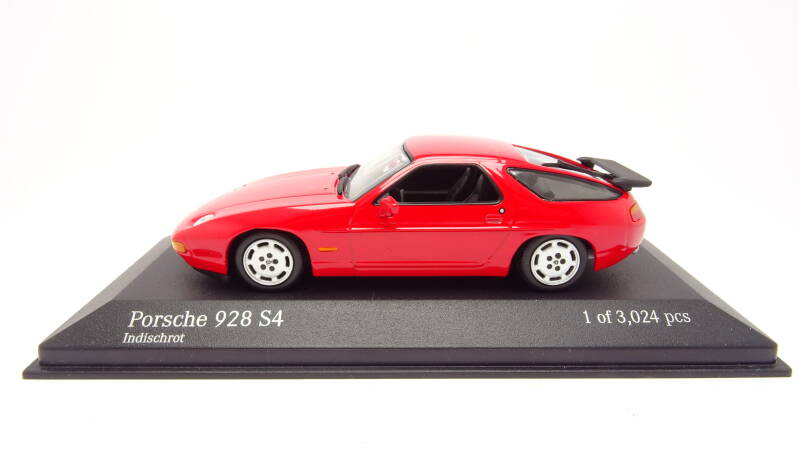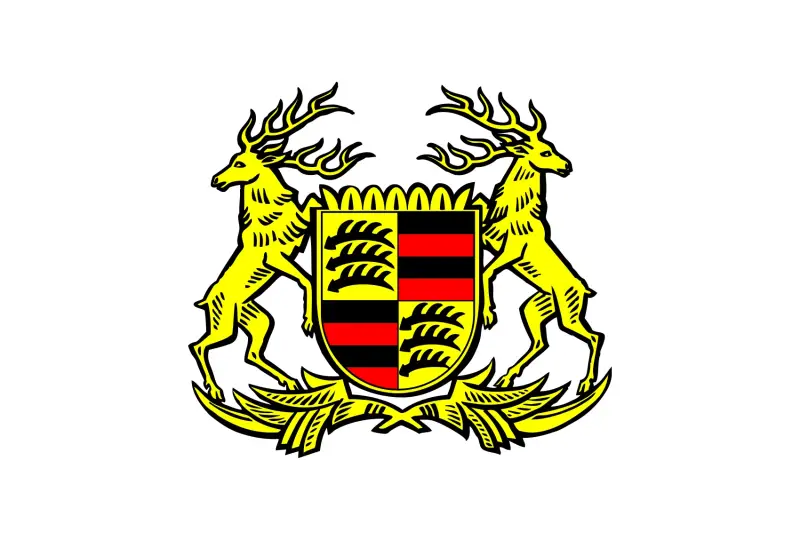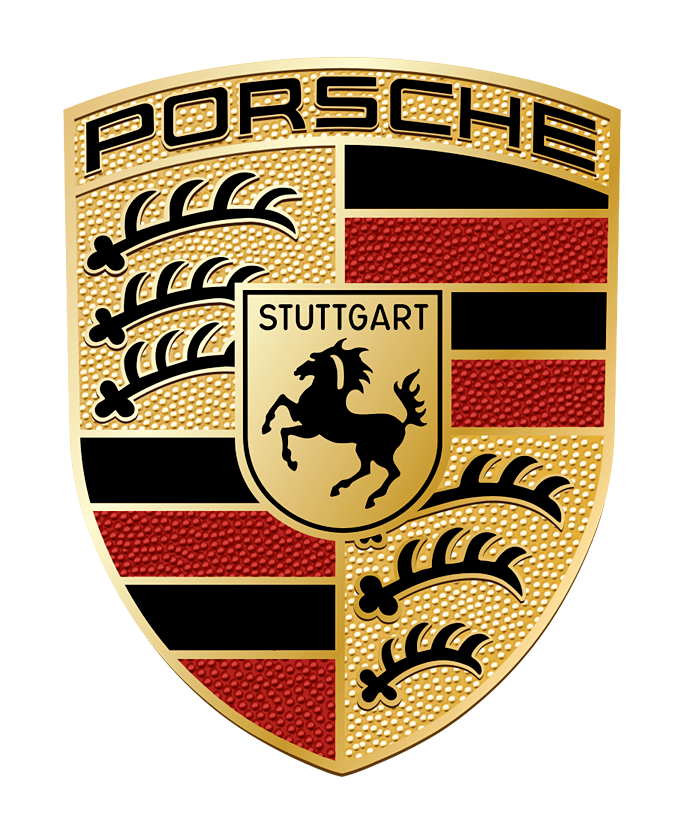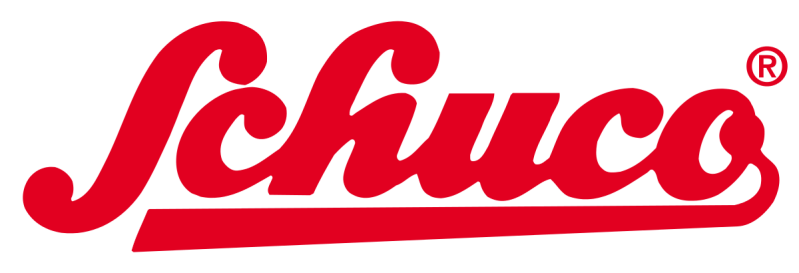

Porsche – car company named after founder Ferdinand Porsche, an Austrian automotive engineer. The family name may have originated in the Czech name "Boreš" (boresh).
Dr.-Ing. h.c. F. Porsche AG, usually shortened to Porsche AG is a German automobile manufacturer specializing in high-performance sports cars, SUVs and sedans. Porsche AG is headquartered in Stuttgart, and is owned by Volkswagen AG, which is itself majority-owned by Porsche Automobil Holding SE. Ferdinand Porsche founded the company called "Dr. Ing. h. c. F. Porsche GmbH" in 1931, with main offices in the centre of Stuttgart.


Headquarters: Stuttgart, Germany, 1931-2012

Parent: Volkswagen Group, Wolfsburg, Germany, 2012-now


547 1960-1961

The Porsche 547 and Porsche 547/3 are naturally-aspirated, flat-four, boxer racing engines, designed by Porsche for Formula One racing; between 1960 and 1961.
In October 1958, the Fédération Internationale de l'Automobile (FIA) announced that for the 1961 Formula One season, engine capacity would be limited to the same 1.5 litres as in Formula Two (F2). This meant that Porsche could use their F2 cars almost unchanged in F1. The 787 would not get the eight-cylinder though, continuing with the air-cooled, DOHC four-cylinder Type 547 boxer engine that had been developed by Ernst Fuhrmann and that had powered the 550 Spyders and 718 series until then. It was powered by a 547/3 four-cylinder engine with Kugelfischer fuel injection. At Monaco the car retired when the fuel injection cut out. A second car, also fitted with the 547/3 engine, was completed in time to appear in the Dutch Grand Prix on 22 May alongside the other 787.



356c

The Porsche 356 is a sports car that was first produced by Austrian company Porsche Konstruktionen GesmbH (1948–1949), and then by German company Dr. Ing. h. c. F. Porsche GmbH (1950–1965). It was Porsche's first production automobile. Earlier cars designed by the Austrian company include Cisitalia Grand Prix race car, the Volkswagen Beetle, and Auto Union Grand Prix cars.

set of 356c coupe and cabriolet https://www.youtube.com/watch?v=oF8LIQFB2os&ab_channel=thebiggarage





911

The Porsche 911 is a two-door 2+2 high performance rear-engined sports car introduced in 1964 by Porsche AG of Stuttgart, Germany. It has a rear-mounted flat-six engine and a torsion bar suspension. The car has been continuously enhanced through the years but the basic concept has remained unchanged. The engines were air-cooled until the introduction of the 996 series in 1998.
The 911 traces its roots to sketches drawn by Ferdinand "Butzi" Porsche in 1959. The Porsche 911 was developed as a more powerful, larger and a more comfortable replacement for the 356, the company's first model.
The one millionth example was manufactured in May 2017 and is in the company’s permanent collection.















924

The Porsche 924 is a sports car produced by Porsche in Neckarsulm, Germany,from 1976 until 1988. A two-door, 2+2 coupé, the 924 replaced the 912E and 914 as the company's entry-level model.

set of 924 and 924 carrera gt Porsche 924 Coupe & Carrera GT (youtube.com)





928

The Porsche 928 is a luxury grand tourer produced from 1978 to 1995. Originally intended to replace the company's iconic 911, the 928 combined the power, poise, and handling of a sports car with the refinement, comfort, and equipment of a luxury sedan. Porsche believed such a flagship would have wider appeal than the compact 911.


set of porsche 928 s & 928 gts Porsche 928 S & GTS (youtube.com)









956

The Porsche 956 was a Group C sports-prototype racing car designed by Norbert Singer and built by Porsche in 1982 for the FIA World Sportscar Championship. It was later upgraded to the 956B in 1984. In 1983, driven by Stefan Bellof, this car established a record that would stand for 35 years, lapping the famed 20.832 km Nürburgring Nordschleife in 6:11.13 during qualifying for the 1000 km Sports Car race. The record was finally surpassed by Timo Bernhard in a derestricted Porsche 919 Evo on 29 June 2018.







944

The Porsche 944 is a sports car manufactured by German automobile manufacturer Porsche from 1982 until 1991. A front-engine, rear-wheel drive mid-level model based on the 924 platform, the 944 was available in coupe or cabriolet body styles, with either naturally aspirated or turbocharged engines. With over 163,000 cars produced, the 944 was the most successful sports car in Porsche's history until the introductions of the Boxster and 997 Carrera.
Extensive design revisions for the 1992 model year prompted Porsche to drop the 944 nameplate and rebrand the vehicle as the 968.

set of 944 coupe and convertible https://www.youtube.com/watch?v=0p7jApHvN-k&ab_channel=thebiggarage





968

The Porsche 968 is a sports car manufactured from 1991 until 1995. It was the final evolution of a series of water-cooled front-engine rear wheel drive models begun almost 20 years earlier with the 924, taking over the entry-level position in the company lineup from the 944 with which it shared about 20% of its parts. The 968 was Porsche's last new front-engined vehicle before the introduction of the Cayenne SUV in 2003.

set of 968 coupe and convertible https://www.youtube.com/watch?v=FX0TXIkoeYw





caymen

The Porsche Boxster and Cayman are mid-engine two-seater sports cars manufactured across four generations — as a 2-door, 2-seater roadster (Boxster) and a 3-door, 2-seater fastback coupé (Cayman).
The first generation Boxster was introduced in 1996; the second generation in late 2005; and the third in 2012. Since the introduction of the fourth generation in 2016, the two models have been marketed as the Porsche 718 Boxster and Porsche 718 Cayman.



cayenne

The Porsche Cayenne is a series of mid-size luxury crossover sport utility vehicles manufactured by Porsche since 2002. It is the first V8-engined vehicle built by Porsche since 1995, when the Porsche 928 was discontinued. It is also Porsche's first off-road variant vehicle since its Super and Junior tractors of the 1950s, and the first Porsche with four doors. Since 2008, all engines have featured direct injection technology.









panamera

The Porsche Panamera is a mid/full-sized luxury vehicle manufactured by Porsche. It is front-engined and has a rear-wheel-drive layout, with all-wheel drive versions also available. The Panamera's name is derived, like the Porsche Carrera lineage, from the Carrera Panamericana race.
The V8-powered Panamera S, 4S, and Turbo models were the first versions that debuted in 2009. The 4.8L Twin Turbo V8 was available at a later stage. The second generation Panamera was revealed on 28 June 2016 at a special event in Berlin, Germany.
The Panamera Sport Turismo debuted in 2017 and is currently available with the same engine range as the 4-door car.










macan

The Porsche Macan (Type 95B) is a high-performance compact luxury crossover SUV produced by the German car manufacturer Porsche from 2014. It is built in Leipzig, Germany. The Macan range includes many variants, including the Macan, Macan T, Macan S, and the Macan GTS. The Macan shares a platform with the Audi Q5. It is the second least expensive car sold by Porsche, being just slightly more expensive than the Porsche 718 Cayman.








taycan

The Porsche Taycan is a battery electric saloon and shooting brake. The concept version of the Taycan, named the Porsche Mission E, debuted in 2015. The name "Taycan" roughly translates from Turkish as "lively young horse", in reference to the steed of the Stuttgart coat of arms on the Porsche crest.
The Taycan uses a new battery-electric all-wheel-drive drivetrain with a permanent-magnet synchronous motor on each axle. Power output ranges from 408hp until 761 hp. The Taycan's interior features Porsche's first fully digital instrumentation, with up to four digital displays.

set of taycan turbo and cross turismo https://www.youtube.com/watch?v=sJy66F3vQCw



vision gt

The Vision Gran Turismo program (commonly abbreviated Vision GT or VGT) is a simulator program used by many car manufacturers, such as Mercedes-Benz, Ferrari and bugatti. These cars appeared originally in the Gran Turismo 6, and later made an appearance in each subsequent Gran Turismo installment (Gran Turismo Sport and Gran Turismo 7), all developed by Polyphony Digital. For the most part, they apply present-day technology and materials, with a handful of notable exceptions that utilize novel propulsion and aerodynamic technologies. Their appearance as free update content has been staggered since the launch of GT6 in 2013, with each one being available for download upon release.

set of vision gran turismo coupe and spider Porsche Vision Gran Turismo Set (youtube.com)











1922-1945
1938-1948
1948-1952
1952-1963
1963-1994
1994-2014
2014-2023
2023-now














































Create Your Own Website With JouwWeb